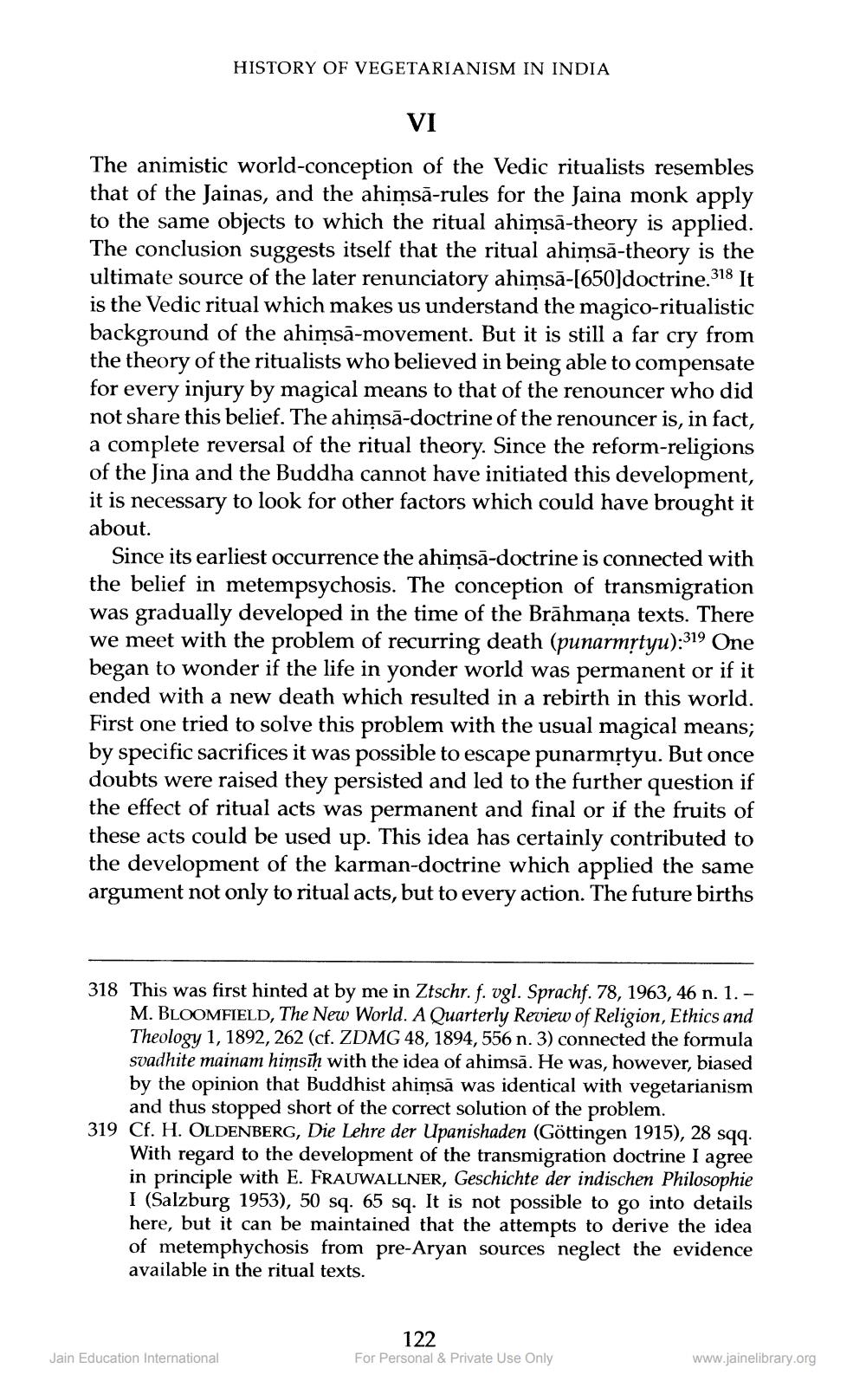________________
HISTORY OF VEGETARIANISM IN INDIA
VI
The animistic world-conception of the Vedic ritualists resembles that of the Jainas, and the ahimsā-rules for the Jaina monk apply to the same objects to which the ritual ahimsā-theory is applied. The conclusion suggests itself that the ritual ahimsā-theory is the ultimate source of the later renunciatory ahimsā-[650]doctrine. 318 It is the Vedic ritual which makes us understand the magico-ritualistic background of the ahimsa-movement. But it is still a far cry from the theory of the ritualists who believed in being able to compensate for every injury by magical means to that of the renouncer who did not share this belief. The ahimsa-doctrine of the renouncer is, in fact, a complete reversal of the ritual theory. Since the reform-religions of the Jina and the Buddha cannot have initiated this development, it is necessary to look for other factors which could have brought it about.
Since its earliest occurrence the ahimsa-doctrine is connected with the belief in metempsychosis. The conception of transmigration was gradually developed in the time of the Brāhmaṇa texts. There we meet with the problem of recurring death (punarmệtyu):319 One began to wonder if the life in yonder world was permanent or if it ended with a new death which resulted in a rebirth in this world. First one tried to solve this problem with the usual magical means; by specific sacrifices it was possible to escape punarmstyu. But once doubts were raised they persisted and led to the further question if the effect of ritual acts was permanent and final or if the fruits of these acts could be used up. This idea has certainly contributed to the development of the karman-doctrine which applied the same argument not only to ritual acts, but to every action. The future births
318 This was first hinted at by me in Ztschr. f. vgl. Sprachf. 78, 1963,46 n. 1. -
M. BLOOMFIELD, The New World. A Quarterly Review of Religion, Ethics and Theology 1, 1892, 262 (cf. ZDMG 48, 1894,556 n. 3) connected the formula svadhite mainam himsth with the idea of ahimsā. He was, however, biased by the opinion that Buddhist ahimsā was identical with vegetarianism
and thus stopped short of the correct solution of the problem. 319 Cf. H. OLDENBERG, Die Lehre der Upanishaden (Göttingen 1915), 28 sqq.
With regard to the development of the transmigration doctrine I agree in principle with E. FRAUWALLNER, Geschichte der indischen Philosophie I (Salzburg 1953), 50 sq. 65 sq. It is not possible to go into details here, but it can be maintained that the attempts to derive the idea of metemphychosis from pre-Aryan sources neglect the evidence available in the ritual texts.
122 For Personal & Private Use Only
Jain Education International
www.jainelibrary.org




